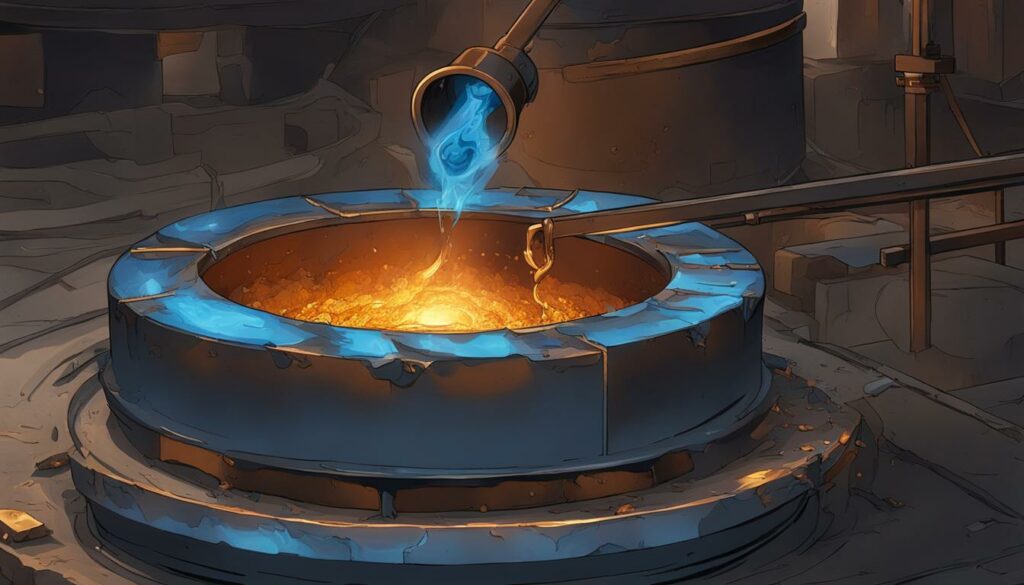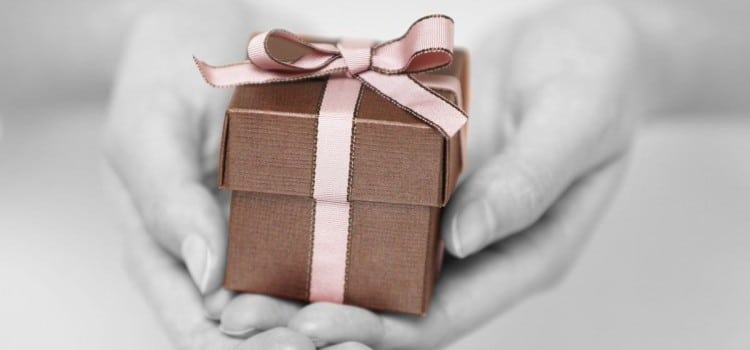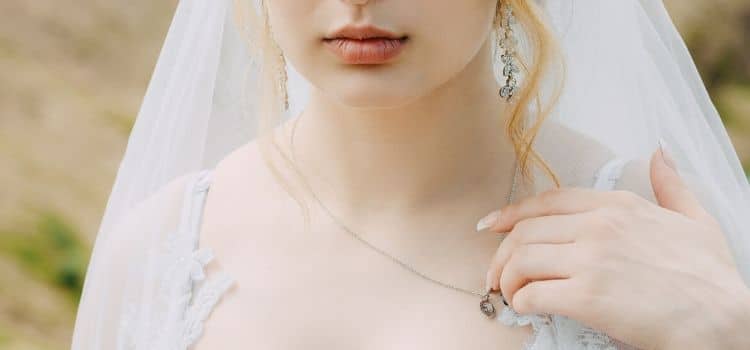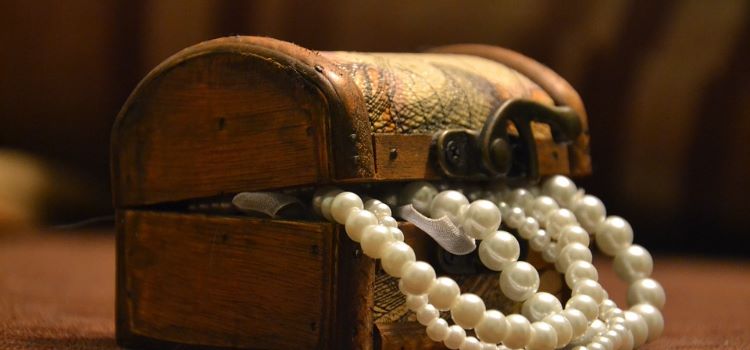Welcome to my article where I will take you on a fascinating journey into the world of rose gold. Have you ever wondered how this beautiful and romantic metal is made? Prepare to be amazed as I reveal the secrets behind the manufacturing process and production of rose gold.
The Basics of Rose Gold
Rose gold is a stunning and popular choice for jewelry, known for its beautiful pink hue. But what exactly is rose gold and how is it made? Let’s delve into the basics of this exquisite metal.
Rose gold is an alloy made by combining pure gold with copper. The most common composition for rose gold is 75% pure gold and 25% copper, resulting in 18-karat rose gold. However, the gold and copper percentages can be adjusted to create different karat values, such as 14-karat or 9-karat rose gold. The addition of copper gives rose gold its distinct blush color.
“Rose gold is a stunning combination of elegance and romance. Its warm pink hue adds a touch of femininity to any piece of jewelry.”
One of the benefits of rose gold is its durability and scratch-resistance. The copper in the alloy strengthens the gold, making it a practical choice for everyday wear. Its versatility also allows it to complement other metals like yellow gold, white gold, and silver, creating a beautiful contrast of colors in jewelry designs.
The Composition of Rose Gold
| Karat Value | Gold Percentage | Copper Percentage |
|---|---|---|
| 18K Rose Gold | 75% | 25% |
| 14K Rose Gold | 58.3% | 41.7% |
| 9K Rose Gold | 37.5% | 62.5% |
Whether you’re drawn to its romantic appeal or its versatility, rose gold is a timeless choice for jewelry lovers. Its unique composition and delicate pink color make it a metal that stands out and adds a touch of elegance to any outfit.
Is Rose Gold Real Gold?
Rose gold is made up of real gold, with a gold content ranging from 9K to 18K. The value of rose gold is determined by its gold content. For example, if a piece of rose gold is labeled as 18K, it contains 75% real gold. The remaining percentage is made up of copper, which gives rose gold its distinctive pink color. There is a misconception that rose gold is worth more than pure white gold or yellow gold, but its value is simply based on the gold content.
Unlike gold plating, which involves applying a thin layer of gold onto a base metal, rose gold is an alloy made up of a combination of gold and copper. This makes rose gold more durable and long-lasting compared to gold-plated jewelry. Rose gold retains its color and shine over time, making it a popular choice for fine jewelry.
| Karat Value | Gold Content | Copper Content |
|---|---|---|
| 9K Rose Gold | 37.5% | 62.5% |
| 14K Rose Gold | 58.3% | 41.7% |
| 18K Rose Gold | 75% | 25% |
Rose gold is a unique blend of gold and copper, creating a beautiful pink hue. While it is not worth more than pure gold, its value lies in its stunning appearance and durability.
Rose gold has become increasingly popular in recent years, thanks to its romantic and stylish appeal. It is a versatile metal that complements a variety of skin tones and can be worn with other metals like yellow gold, white gold, and silver. Whether you’re considering rose gold jewelry or exploring the option of rose gold hair color, this unique metal is sure to add a touch of elegance and sophistication to any look.
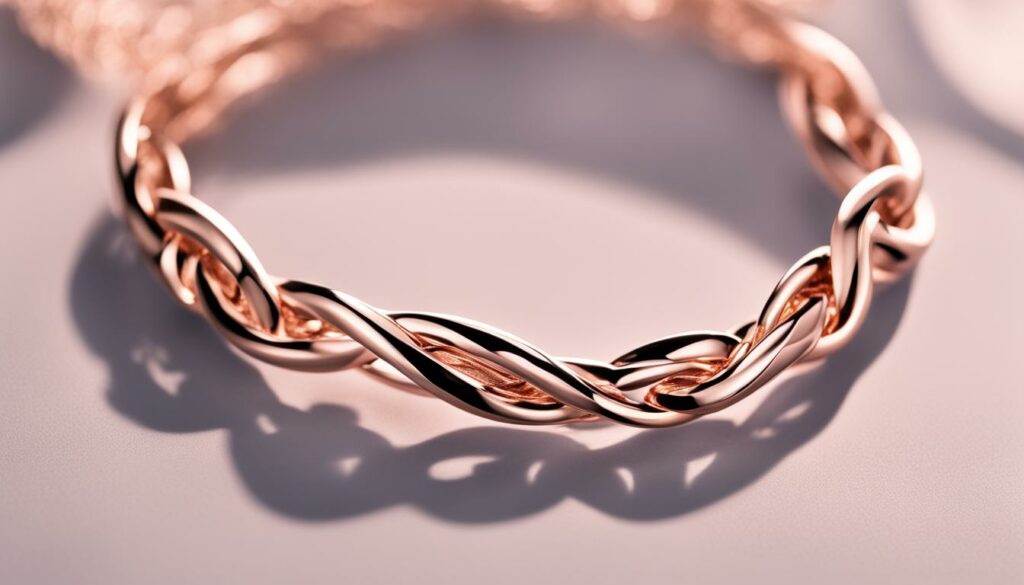
Does Rose Gold Tarnish?
One of the common questions about rose gold is whether it tarnishes over time. While rose gold is not prone to tarnishing like some other metals, it may undergo a slight color change as it ages. This gradual transformation can result in the development of redder hues, adding character and uniqueness to the piece. The color change is primarily caused by the copper in the alloy, which matures and develops an earthy patina. Despite this natural aging process, rose gold remains durable and resistant to tarnish, making it a popular choice for long-lasting jewelry.
In Summary:
- Rose gold is not prone to tarnishing.
- Over time, it may undergo a slight color change, developing redder hues.
- The color change is caused by the maturing of the copper in the alloy.
- Rose gold remains durable and resistant to tarnish, making it a popular choice for long-lasting jewelry.
“Rose gold is not prone to tarnishing, but it may change slightly in color over time.”
So, if you’re considering wearing or purchasing rose gold jewelry, you can rest assured that it will maintain its beauty and shine for years to come. The unique patina that may develop over time adds to the charm and character of rose gold, making it a timeless and sought-after choice.
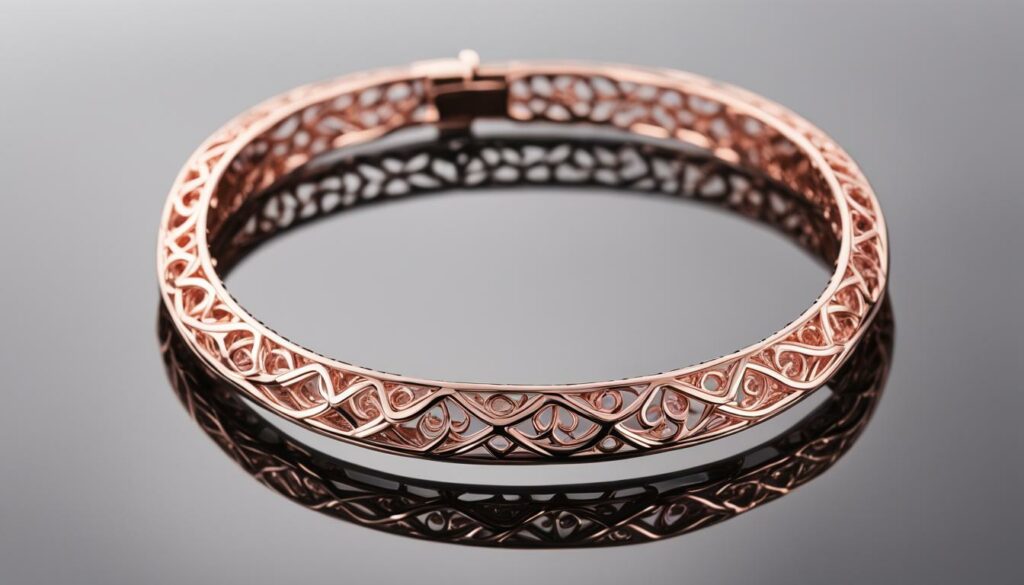
| Does Rose Gold Tarnish? | Color Change Over Time |
|---|---|
| No, rose gold is not prone to tarnishing. | Over time, rose gold may develop slightly redder hues due to the maturing of copper in the alloy. |
| Rose gold remains durable and resistant to tarnish, making it a popular choice for long-lasting jewelry. | The natural color change adds uniqueness and character to the piece. |
Are Different Metals Mixed to Create Rose Gold?
When it comes to the creation of rose gold, different metals are indeed mixed to achieve its unique and beautiful hues. The most common combination involves blending pure gold with copper. However, the specific composition may vary among jewelry makers, as some may add additional metals to enhance the color and improve workability.
In addition to gold and copper, jewelers may incorporate other metals such as yellow gold, white gold, and even a dash of silver. These additions not only contribute to the overall aesthetic appeal of rose gold but also impact its physical properties. Other metals like zinc, nickel, and palladium can also be used in the alloy mix, depending on the desired characteristics and durability.
Metals used in the creation of rose gold:
- Gold – Typically comprises 37.5% to 75% of the total alloy.
- Copper – Gives rose gold its distinctive pink color.
- Yellow gold – Enhances the warmth and richness of the hue.
- White gold – Adds a touch of brightness and complements the pink tones.
- Silver – Provides a subtle shimmer and contributes to the workability of the metal.
- Zinc, nickel, palladium – May be used in varying amounts to achieve desired properties.
By carefully combining these metals, jewelers can create rose gold that exhibits the perfect balance of color, durability, and workability. The resulting alloy is not only visually appealing but also possesses the necessary strength to withstand the rigors of everyday wear. Whether it’s a stunning piece of rose gold jewelry or a fashionable accessory, the meticulous craftsmanship and thoughtful blend of metals make rose gold a truly unique and sought-after metal.
| Metal | Percentage in Alloy |
|---|---|
| Gold | 37.5% to 75% |
| Copper | To achieve desired color |
| Yellow Gold | Varies depending on desired warmth |
| White Gold | Varies depending on desired brightness |
| Silver | Varies depending on desired shimmer |
| Zinc, Nickel, Palladium | May be present in varying amounts |
Rose Gold in Fashion & Style
When it comes to fashion and style, rose gold has become a top choice for jewelry enthusiasts. Its soft, pink hue adds a touch of elegance and femininity to any outfit. Rose gold jewelry, including rings, bracelets, chains, pendants, and earrings, has gained popularity for its versatility and ability to complement a wide range of skin tones. Whether you’re wearing yellow gold, sterling silver, platinum, or white gold, rose gold pieces blend seamlessly, creating a beautiful combination of complementary colors. Tri-color jewelry, featuring silver, gold, and rose gold, is also a rising trend, adding a unique and eye-catching element to any ensemble.
One of the reasons rose gold has become so fashionable is its timeless appeal. It offers a classic yet different option for those who want to stand out from the crowd. Rose gold’s gentle color adds a touch of romance and sophistication to any look, making it a perfect choice for special occasions or everyday wear. Whether you’re dressing up for a date night or adding a subtle hint of luxury to your office attire, rose gold jewelry is sure to make a statement.
The Rise of Rose Gold Trends
Rose gold has been making waves in the fashion industry, with designers incorporating this stunning metal into their collections. From high-end fashion houses to independent jewelry brands, rose gold has become the go-to choice for creating exquisite and coveted pieces. Celebrities and influencers have also played a significant role in popularizing rose gold, as they often showcase their stunning rose gold jewelry on social media platforms.
As fashion trends evolve, rose gold continues to shine as a favorite among jewelry enthusiasts. Its versatility, elegance, and ability to complement different styles and skin tones make it a staple in fashion-forward wardrobes. Whether you prefer dainty and delicate pieces or bold statement jewelry, rose gold offers a wide range of options to suit your personal style.
| Benefits of Rose Gold in Fashion and Style |
|---|
| Timeless and elegant |
| Complements various skin tones |
| Versatile and easy to style |
| Blends well with other metals |
| Offers a unique and romantic touch |
Rose gold’s enduring popularity in fashion and style proves that this stunning metal is here to stay. Whether you opt for a delicate rose gold necklace, a stack of rose gold bangles, or a pair of rose gold earrings, you can’t go wrong with this versatile and fashionable choice.
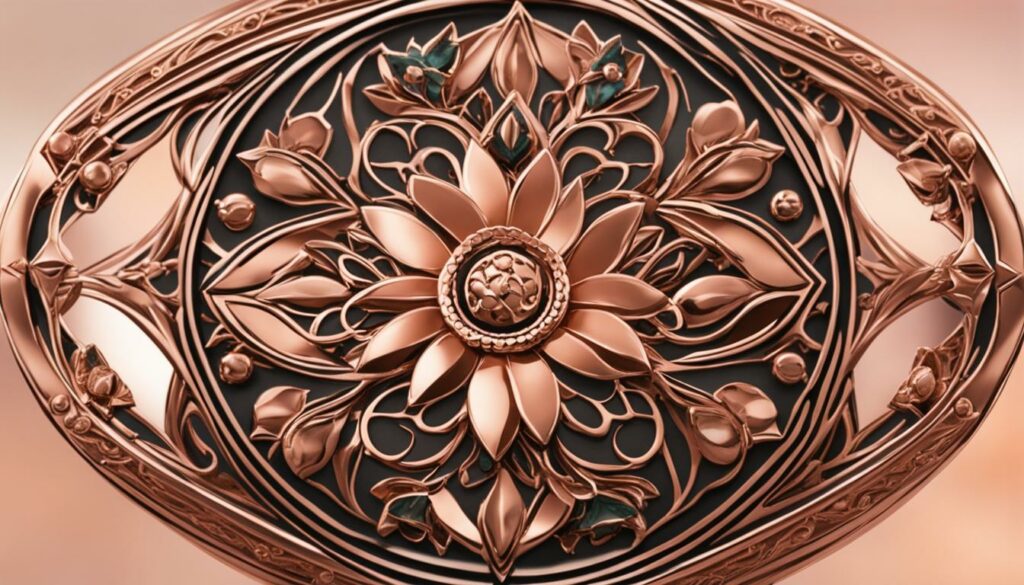
Rose Gold vs. Plating
Rose gold plating is a popular alternative for those who desire the elegant look of rose gold without the higher price tag. Plated jewelry has a base made from copper, brass, bronze, or sterling silver. To create the appearance of rose gold, the base is dipped into a mixture of gold, silver, and copper. However, it’s important to note that there are significant differences between rose gold and gold plating.
Rose gold plating is a less expensive option for those who love the look of rose gold but don’t want to pay the price of real rose gold.
One of the main differences between rose gold and gold plating is durability. Rose gold is a real gold alloy, combining gold and copper to create a unique shade of pink. It is a durable and scratch-resistant metal that can withstand everyday wear. On the other hand, gold plating is a thin layer of gold applied to the surface of another metal. While it may look like rose gold initially, the plating can wear off over time, exposing the base metal underneath.
To maintain the plating, it is important to avoid exposure to chemicals, water, and abrasion.
Additionally, the value of rose gold is based on its gold content, whereas gold plating has a limited amount of gold in its composition. Rose gold is determined by its karat value, with 18K rose gold containing 75% pure gold. Gold plating, on the other hand, typically contains a very thin layer of gold, often measured in microns. As a result, the color and appearance of gold plating may fade or change over time, while rose gold retains its distinctive pink hue.
| Rose Gold | Gold Plating |
|---|---|
| Durable and scratch-resistant | Less durable, plating can wear off |
| Contains a significant amount of gold | Thin layer of gold applied to another metal |
| Retains its distinctive pink hue | Color may fade or change over time |
Rose gold plating is a more affordable option for those who want the look of rose gold without the higher price tag.
How Long Will Plating Last?
When it comes to the longevity of rose gold plating, there are a few factors to consider. On average, rose gold plating can last for about three years, but its durability can vary depending on various factors. Signs of wear may include uneven wearing or a spotty appearance, indicating that the plating may be starting to fade or wear off. However, it’s important to note that plating can be reapplied to extend the lifespan of the jewelry.
The breakdown of plating is often caused by environmental factors such as exposure to chemicals, water, or beauty products. Therefore, it is recommended to take certain precautions to prevent tarnishing and extend the life of your rose gold plated jewelry. For instance, it is advised to remove plated jewelry before swimming, exercising, or applying lotions, creams, or perfumes. Storing plated jewelry in a sealed plastic bag can also help protect it from tarnishing.
It’s worth mentioning that the durability of rose gold plating is not as long-lasting as other platings, such as gold or rhodium white. Therefore, proper care and maintenance are essential to ensure the longevity of your plated jewelry and maintain its beautiful rose gold appearance.
| Factors Affecting Rose Gold Plating Durability | Tips to Extend the Lifespan of Plating |
|---|---|
| Exposure to chemicals, water, and beauty products | Remove plated jewelry before swimming, exercising, or applying lotions, creams, or perfumes |
| Environmental factors | Store plated jewelry in a sealed plastic bag |
“The durability of rose gold plating can vary depending on individual care and maintenance. Proper precautions, such as removing plated jewelry before swimming or applying lotions, can help extend its lifespan.” – Rose Gold Enthusiast
Tips to Keep Your Rose Plated Jewelry from Tarnishing
When it comes to keeping your rose gold plated jewelry looking its best, a little extra care goes a long way. Follow these simple tips to prevent tarnishing and maintain the beauty of your rose gold pieces:
- Avoid exposing your jewelry to harsh chemicals, such as chlorine and cleaning agents, as they can cause the plating to fade or wear off faster. It’s best to remove your jewelry before swimming, cleaning, or engaging in any activities that involve contact with chemicals.
- Take off your rose gold plated jewelry before showering or washing your hands. The constant exposure to water and soap can accelerate the tarnishing process. It’s recommended to store your jewelry in a dry place when you’re not wearing it.
- Gently clean your jewelry using mild dish soap and warm water. Use a soft cloth or a jewelry brush to remove any dirt or oils. Avoid scrubbing too hard or using abrasive materials, as they can scratch the plating.
- When storing your rose gold plated jewelry, keep it separate from other jewelry pieces to prevent scratching. You can also use anti-tarnish strips or a small piece of chalk in your jewelry box to help absorb moisture and slow down tarnishing.
By following these tips, you can extend the lifespan of your rose gold plated jewelry and keep it looking stunning for years to come.
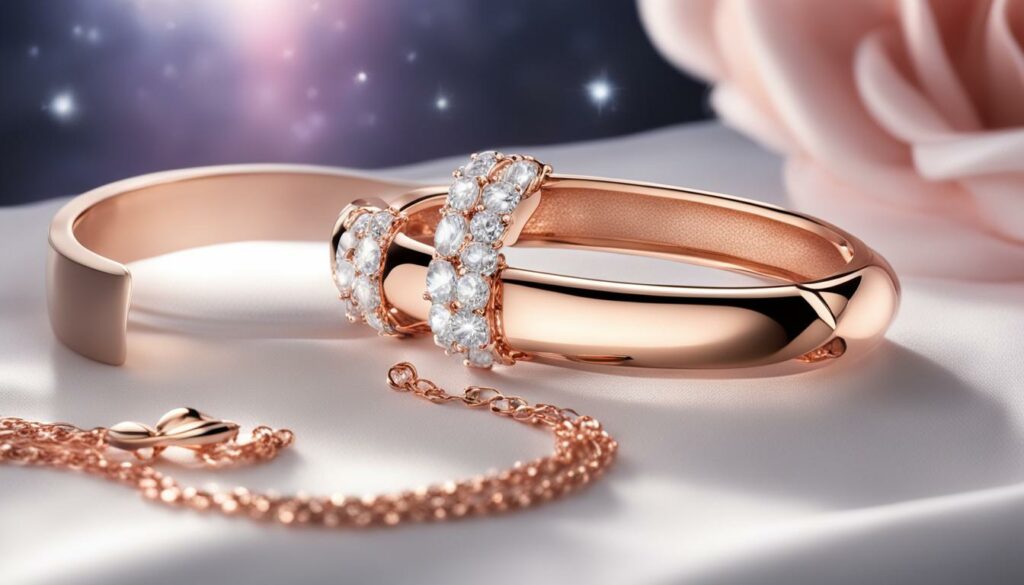
Why Does Rose Gold Plating Tarnish?
“The plating can tarnish due to exposure to moisture, chemicals, and even the natural oils on our skin. It’s important to take proper care of rose gold plated jewelry to minimize tarnishing and maintain its shine.”
Understanding why rose gold plating tarnishes can help you take better care of your jewelry. The plating can tarnish due to exposure to moisture, chemicals, and even the natural oils on our skin. It’s important to take proper care of rose gold plated jewelry to minimize tarnishing and maintain its shine.
| Tips to Prevent Tarnishing | Tips to Remove Tarnish |
|---|---|
|
|
Regular maintenance and proper care are key to keeping your rose gold plated jewelry looking its best. By following these tips, you can enjoy the beauty of your rose gold pieces for a long time.
Rose Gold FAQs
Curious about rose gold? Here are some frequently asked questions about this beautiful metal:
1. What is rose gold?
Rose gold is a type of gold alloy that is created by combining pure gold with copper. The addition of copper gives rose gold its signature pink or rosy hue, making it distinct from traditional yellow or white gold.
2. Is rose gold real gold?
Yes, rose gold is made up of real gold. It is classified based on its gold content, which is indicated by the karat value. For example, 18K rose gold contains 75% gold, while 14K rose gold contains 58.3% gold.
3. Does rose gold tarnish?
Rose gold is not prone to tarnishing like other metals, such as sterling silver. However, over time, the copper in the alloy may cause the color of rose gold to slightly deepen, giving it a more vintage and unique appearance.
4. Can I wear rose gold with other metals?
Absolutely! Rose gold is a versatile metal that pairs well with other metals like yellow gold, white gold, and sterling silver. This makes it easy to create beautiful and stylish jewelry combinations.
Whether you’re considering rose gold for your engagement ring, looking to add a touch of elegance to your jewelry collection, or simply want to experiment with a new hair color, rose gold is a captivating choice that never goes out of style.
The Journey of Rose Gold
The history of rose gold can be traced back to the early 1800s when it gained popularity among Russian royalty. It was later immortalized by Carl Fabergé in his exquisite Fabergé Eggs. Today, rose gold is a classic choice for engagement rings and other jewelry, known for its soft pink hue and timeless appeal. The journey of rose gold begins with the combination of two metals: gold and copper. The proportions of each metal determine the karat value of the rose gold, with 18K rose gold being the most common.
Creating rose gold involves carefully blending gold and copper to achieve the desired shade. The unique blend of metals gives rose gold its durability and scratch-resistance, making it a popular choice for everyday jewelry. The popularity of rose gold continues to grow, as it offers a versatile and romantic alternative to traditional yellow gold and white gold. Its gentle color complements all skin tones, making it a sought-after choice in the world of fashion and style.
I believe that the journey of rose gold reflects our enduring fascination with beauty and elegance. From its origins in Russian royalty to its modern-day appeal, rose gold continues to captivate us with its delicate charm. The blend of gold and copper creates a metal that is not only visually stunning but also strong and enduring. Whether worn as a piece of jewelry or adorning our hair, rose gold is an embodiment of timeless elegance.
The Symbolism of Rose Gold
Throughout history, rose gold has held various symbolic meanings. Its soft pink hue is often associated with love, romance, and femininity. In the realm of jewelry, rose gold has become a popular choice for engagement rings, representing eternal love and commitment. Its warm tones and delicate appearance add a touch of elegance and sophistication to any piece of jewelry. Furthermore, rose gold is often used to commemorate special occasions and milestones, making it a cherished and sentimental metal.
| Symbolism | Description |
|---|---|
| Love | The soft pink hue of rose gold is often associated with love and romance, making it a popular choice for engagement rings and wedding bands. |
| Femininity | The delicate and feminine appearance of rose gold symbolizes grace, beauty, and elegance. |
| Romance | Rose gold evokes a sense of romance and passion, making it a cherished metal for expressing deep emotions. |
| Sentimentality | Due to its association with special occasions, rose gold holds sentimental value and is often passed down as a family heirloom. |
The journey of rose gold is a testament to our eternal quest for beauty and meaning. From its rich history to its enduring symbolism, rose gold continues to capture our hearts and adorn our lives with its delicate charm.
Rose Gold in Ancient Jewelry
Recent archaeological discoveries have shed light on the use of rose gold in ancient times, providing fascinating insights into the cultural and aesthetic choices of ancient civilizations. Dating back to the first millennium in present-day Colombia, there is evidence of a preference for pinkish gold jewelry in the Andean region. Skilled craftsmen used a technique called depletion gilding to create rose gold by selectively removing the outer gold layers, revealing the beautiful pink and orange hues underneath. This ancient preference for rose gold challenges the notion that gold should be as golden as possible, highlighting the early recognition of the unique beauty and allure of this metal.

The use of rose gold in ancient jewelry demonstrates the mastery of gilding techniques and the cultural significance placed on this distinctive metal. The skill and artistry required to create rose gold jewelry showcases the ingenuity and creativity of ancient civilizations. It also reflects their appreciation for the delicate balance between the warmth of gold and the romantic hues of pink, creating a truly mesmerizing aesthetic.
These archaeological findings provide a deeper understanding of how rose gold has transcended time, remaining a timeless and coveted metal in the world of jewelry today. The enduring allure of rose gold can be traced back to these ancient civilizations, who recognized and celebrated its beauty long before it became a modern trend.
Table: Ancient Rose Gold Jewelry
| Civilization | Time Period | Techniques Used | Notable Pieces |
|---|---|---|---|
| Andean Region | First millennium | Depletion gilding | Elaborate necklaces, earrings, and rings |
| Egyptian | New Kingdom (1550-1070 BCE) | Gilded gold | Funerary masks, amulets, and ceremonial jewelry |
| Greco-Roman | 4th century BCE – 4th century CE | Gold-copper alloy | Delicate filigree pieces, diadems, and bracelets |
| Mesoamerican | Pre-Columbian era (2000 BCE – 1500 CE) | Lost-wax casting | Ornate pendants, ear flares, and nose rings |
The Artistry of Rose Gold Hair
Adding a touch of rose gold to your hair can be a stunning and vibrant way to express your personal style. Achieving the perfect rose gold hair color involves a specific technique and a combination of hair dye. For those with a bleach blonde or white blonde hair base, a mixture of Pastel Peachy Orange and Pastel Silver Rose ColorConditioner can create the desired rose gold hue. If you have a medium warm blonde hair base, a mixture of Pastel Silver Rose and Pastel Peachy Orange ColorConditioner is recommended.
Before applying the hair dye, it is important to perform a strand test to determine the desired color intensity. Once you are satisfied with the result, you can proceed to apply the dye to your entire head, ensuring an even application from roots to ends. To enhance the color development, cover your hair with a shower cap to generate heat, allowing the dye to penetrate the hair shaft. After the designated development time, rinse your hair thoroughly and style as desired to reveal the perfect rose gold hair color.

The Durability of Rose Gold Hair Color
When it comes to rose gold hair color, one of the common questions is about its longevity. How long does rose gold hair dye last? The answer depends on various factors, including individual hair care routines and maintenance. On average, rose gold hair dye can last for several weeks to a few months before it starts to fade. To ensure the color lasts as long as possible, there are a few tips and tricks to keep in mind.
Proper hair care:
Using color-safe shampoo and conditioner specifically designed for colored hair can help prevent fading and maintain the vibrancy of the rose gold hue. These products are formulated to be gentle and protect the color from premature fading caused by harsh chemicals found in regular shampoos. Incorporating a deep conditioning treatment once a week can also help keep the hair healthy and prevent damage.
Avoid excessive heat styling:
Heat can cause the color to fade faster, so it’s important to minimize the use of heat styling tools like straighteners, curling irons, and blow dryers. When heat styling is necessary, using a heat protectant spray can provide an extra layer of defense against potential color fading.
Protect from UV exposure:
Exposure to the sun’s harmful UV rays can accelerate color fading. To protect the rose gold hair from UV damage, it’s recommended to wear a hat or use hair products that contain UV filters. This will help shield the hair from the sun’s rays and prolong the life of the color.
By following these tips and maintaining a proper hair care routine, it’s possible to prolong the vibrancy of rose gold hair color and enjoy the beautiful shade for an extended period. However, it’s important to note that the final color result may vary depending on the natural hair color and porosity.

Table: Comparing the Longevity of Different Hair Colors
| Hair Color | Longevity |
|---|---|
| Rose Gold | Several weeks to a few months |
| Blonde | 4-6 weeks |
| Brunette | 6-8 weeks |
| Black | 8-12 weeks |
| Red | 4-6 weeks |
| Fantasy Colors | 2-6 weeks |
Caring for Rose Gold Hair
Caring for your rose gold hair is essential to maintain its vibrant color and keep your locks healthy. By following a few simple tips, you can ensure that your rose gold hair stays beautiful and dazzling for an extended period.
First and foremost, it is crucial to use color-safe shampoo and conditioner specifically formulated for colored hair. These products help preserve the vibrancy of the rose gold hue and prevent premature fading. Look for products that are sulfate-free and enriched with ingredients like argan oil or keratin to nourish and protect your hair.
Another key tip is to avoid excessive heat styling, as high temperatures can accelerate color fading. Limit the use of heat tools such as straighteners, curling irons, and blow dryers. If you do need to style your hair with heat, make sure to use a heat protectant spray or serum to minimize damage and color loss.
Protecting your hair from UV exposure is also essential to maintain the longevity of your rose gold color. Sunlight can cause color fading, so consider wearing a hat or using a UV protection spray when spending time outdoors. Additionally, chlorinated water can also strip color from your hair, so it’s a good idea to wear a swim cap or rinse your hair thoroughly with clean water after swimming in a pool or the ocean.
| Tips for Maintaining Rose Gold Hair Color |
|---|
| Use color-safe shampoo and conditioner |
| Avoid excessive heat styling |
| Protect your hair from UV exposure |
| Rinse your hair after swimming in chlorinated water |
| Consider periodic color touch-ups |
Remember to schedule regular color touch-ups with your hairstylist to maintain the vibrancy of your rose gold hair. Depending on your hair growth rate and the desired intensity of the color, touch-ups may be needed every four to six weeks. During these appointments, your hairstylist can also assess the condition of your hair and provide any necessary treatments to keep it healthy and strong.
By following these care tips and staying diligent with your hair care routine, you can enjoy the stunning and eye-catching beauty of your rose gold hair for an extended period. Embrace the magic of this trendy and charming hair color while keeping your locks in excellent condition.
Conclusion
In conclusion, the process of creating rose gold involves combining pure gold with copper. This combination results in a beautiful soft pink color that has become widely popular in jewelry and fashion. The most common alloy for rose gold is 18K, which consists of 75% gold and 25% copper. However, the proportions of gold and copper can vary, allowing for different karat values.
Rose gold is not only aesthetically pleasing but also durable and scratch-resistant. The addition of copper gives it strength and longevity, making it suitable for everyday wear. Whether you choose rose gold jewelry or opt for rose gold hair color, you can be confident that it will remain vibrant and elegant with proper care and maintenance.
For those looking for a more affordable option, rose gold plating provides the look of rose gold without the higher price tag. However, it’s important to keep in mind that plating may wear off over time and require reapplication to maintain its appearance.
Overall, rose gold is a timeless and versatile metal that offers a unique and romantic touch. Its popularity continues to grow, and it remains a sought-after choice for those who want to stand out with a touch of elegance.
FAQ
How is rose gold made?
Rose gold is made by mixing pure gold with copper, typically in a 75% gold and 25% copper ratio to create 18K rose gold. The gold and copper alloy gives rose gold its soft pink color.
Is rose gold real gold?
Yes, rose gold is real gold. It is made by combining gold with copper, and the value of rose gold is based on its gold content.
Does rose gold tarnish?
Rose gold is not prone to tarnishing, but it may develop an earthy patina over time, resulting in slightly redder hues. This natural color change adds value and uniqueness to vintage rose gold jewelry.
Are different metals mixed to create rose gold?
Rose gold is primarily made by combining gold and copper. However, some jewelry makers may add other metals like yellow gold, white gold, and silver to enhance the color and workability of the alloy.
What is the difference between rose gold and rose gold plating?
Rose gold is an alloy made with a combination of gold and copper, while rose gold plating involves applying a thin layer of rose gold to a base metal, such as copper or sterling silver, through a plating process.
How long does rose gold plating last?
Rose gold plating can last for about three years, but its lifespan may vary depending on individual wear and care. The plating may wear off over time and require reapplication.
How can I keep my rose gold plated jewelry from tarnishing?
To keep rose gold plated jewelry from tarnishing, avoid exposure to chemicals, water, and abrasion. Remove plated jewelry before swimming, exercising, or applying lotions, creams, or perfumes. Storing it in a sealed plastic bag can also help protect it from tarnishing.
What is the journey of rose gold?
Rose gold first gained popularity in the early 1800s when it was used by Russian royalty. It later became famous for its use in Fabergé Eggs. Today, rose gold is a classic choice for engagement rings and jewelry.
What is the artistry of rose gold hair?
Achieving rose gold hair involves a specific technique and a combination of hair dye. The dye is applied to the hair to create the desired rose gold hue, which can vary depending on the individual’s natural hair color and porosity.
How long does rose gold hair dye last?
Rose gold hair dye can last for several weeks to a few months, depending on individual hair care routines and maintenance. Prolonging the color’s vibrancy involves using color-safe products and protecting the hair from excessive heat styling, UV exposure, and chlorine.
How do I care for rose gold hair?
To keep rose gold hair looking its best, use color-safe shampoo and conditioner, avoid excessive heat styling, protect the hair from UV exposure and chlorine, and regularly trim and deep condition the hair.
Source Links
- https://lexiejordanjewelry.com/blogs/posts/what-is-rose-gold
- https://www.livescience.com/60535-ancient-colombians-preferred-rose-gold.html
- https://evilhair.com/blogs/hair-coloring-knowledge-base/how-to-rose-golde-hair-color
